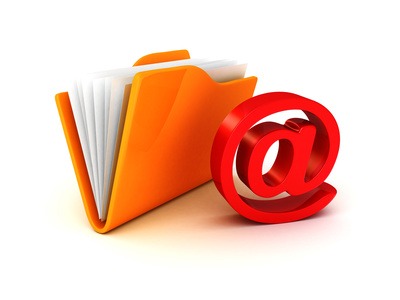How do you feel about email? If you’re like many, just the mere mention of it brings feelings of stress and overwhelm. One of the largest challenges I see people face with email is the creation of folders for organization. Some have so many folders they have lost track of their original system, and others have no folders at all. What if I told you that you could manage and maintain your email like a pro with just five top-level email folders?
First let me define top-level folders. These are those folders that sit just under your Inbox. They help you to manage your email messages so that you can keep your Inbox clear. Your Inbox should be used as a processing station, not a repository. In addition, folders can help you to make decisions on your incoming information because after all, clutter is postponed decisions. Following are the only 5 email folders you will ever need:
- !Waiting On: This is used to store messages that you have taken action on and are waiting for response or action from another person. If it is important that a message is followed-up on, then a task should be created to do so at a certain date. Otherwise, I recommend reviewing and cleaning this folder periodically. Note that the “!” in front of “Waiting” allows this folder to remain at the top of your folder list which is typically alphabetized.
- @Action: These are messages that require one-time action. A task should be created for each one of these items within your task management system. If using the To-Do Bar or Task List in your email management tool, you might also copy and paste the email right into the task with the @Action folder then used as a backup holding place for all task-related messages. (If you are an Outlook user, using QuickSteps along with the @Action folder allows you to create a task with the email attached and move the email to the @Action folder – in one click.)
- Active Projects: Store emails that relate to active projects here. Within this top-level folder, you may have sub-folders for each project.
- Education: This is a holding place for the emails you receive that you’d like to read, listen to, or watch when you have time. If you have access to your email on your phone or mobile device, you can access this folder from anywhere and use your free time to catch up on your education. You may also set up rules so that certain newsletters are moved here automatically upon hitting your inbox.
- Reference: As emails come in, use the ARTTM methodology. In other words, decide whether they require Action, should be filed for future Reference, or just need to be Tossed (Deleted). The Reference folder may then include sub-folders allowing you to organize by type of reference. For example, you might have: Non-Active Projects, Marketing, HR, Networking, Technology, and Travel.
Once you have become accustomed to using these five simple folders, you may find that a little adjustment works better for you. For example, I have split my Active Projects folder into “Active-Clients” and “Active-Other.” While I could have continued to store all of my Active Projects in one top-level folder, I felt this breakout was worthwhile for the way that I work. Before adding new folders, though, be sure they are needed and make sense with your daily workflow and style. Only then will you be able to maintain what you have built.
If you are interested in learning more tips and tools for email management or feel this would be valuable for your team, contact me to schedule a workshop or in-person or virtual email management session.


Great email organizing tips, Lori! I especially like the @Action idea of using Outlook QuickSteps to handle multiple steps with one click.
Thanks Susan. This is one of my favorites as well!